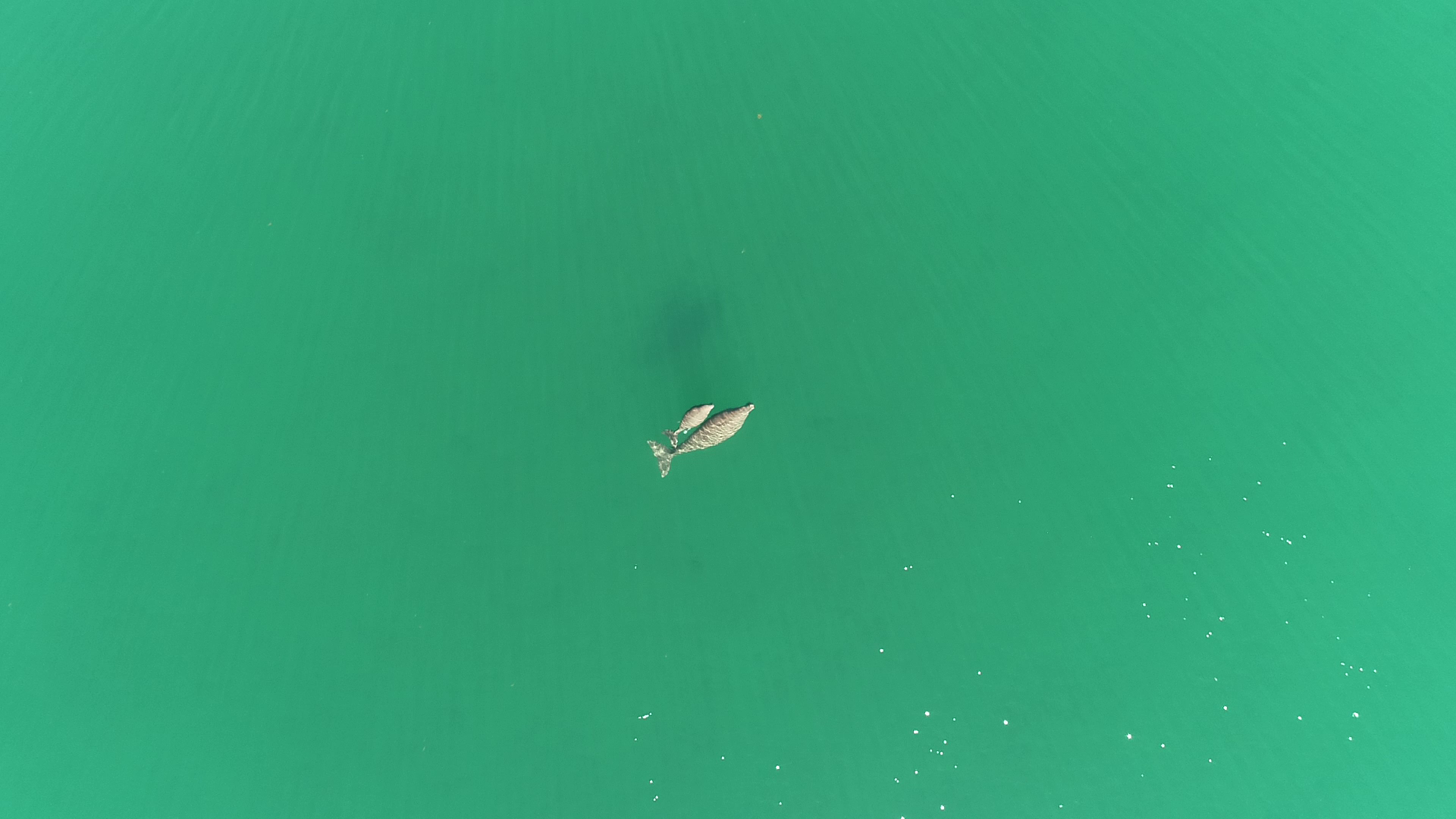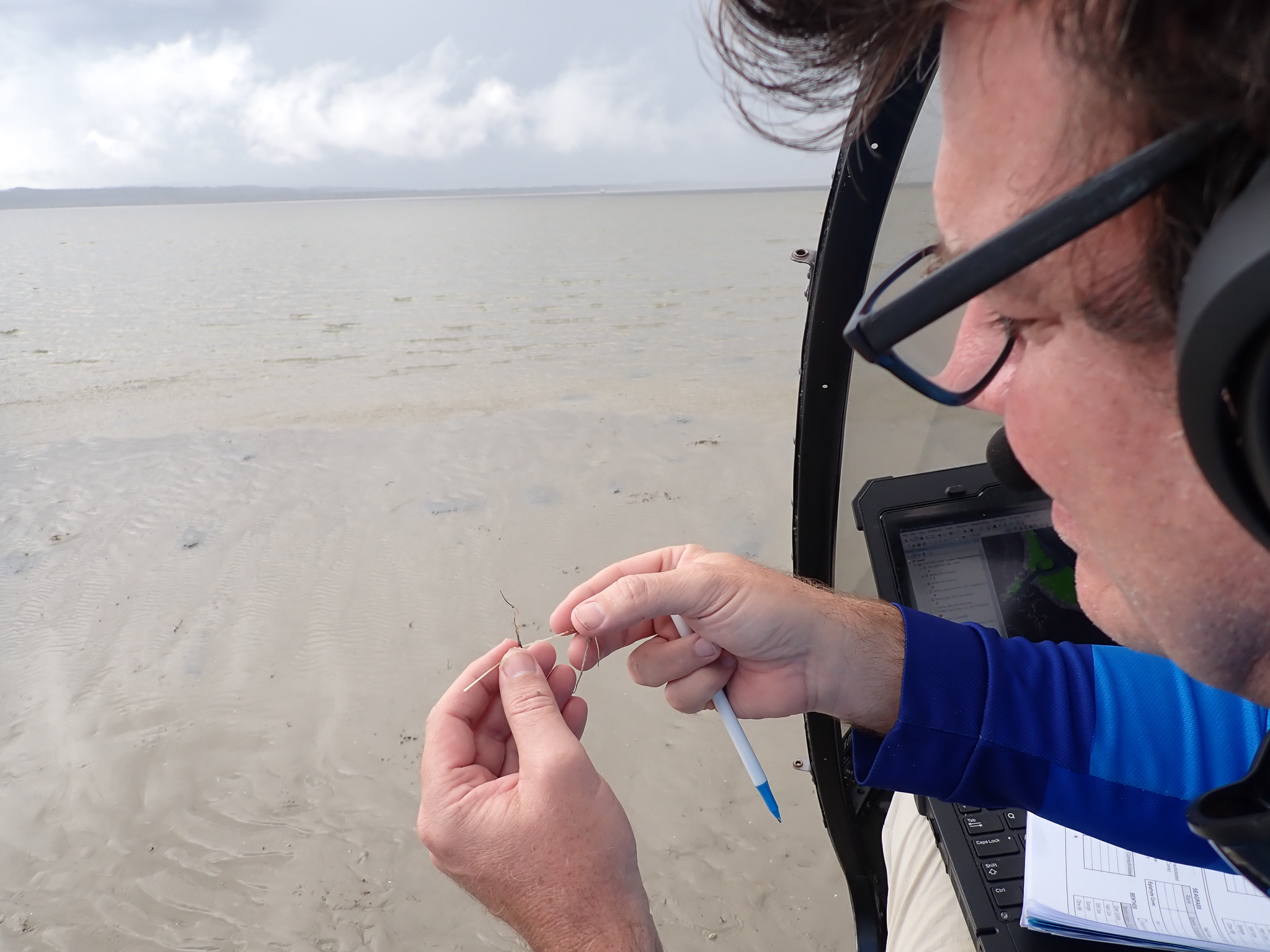Widespread regrowth of seagrass has been reported within the Great Sandy Marine Park, following multiple flood events in early 2022 that led to a devastating loss of seagrass meadows.
Researchers from James Cook University (JCU) TropWATER, in collaboration with Queensland Department of Environment & Science and marine park rangers from Queensland Parks and Wildlife Service (QPWS), have been conducting surveys to monitor the loss and regrowth of seagrass meadows since the floods.
JCU TropWATER’s Associate Professor Michael Rasheed said the most recent results show widespread recovery of seagrass, in many sections of the marine park.
“We have seen big increases in the deepwater seagrasses in the middle of Hervey Bay as well as substantial expansion of in intertidal seagrasses in the Great Sandy Strait that were devastated following the floods of 2022,” he said.
“This is a reassuring outcome, but there is still uncertainty of seagrass meadows’ resilience, and if it can sustain this recovery in the long-term.”
Senior Ranger Daniel Clifton said the Great Sandy Marine Park was a major hotspot for dugongs in Queensland, meaning the overall health of the marine ecosystem played a crucial role in sustaining populations of these threatened animals.
“The Great Sandy Marine Park’s seagrass meadows are a critical part of the marine ecosystem to support local sea turtle and dugong populations,” Ranger Clifton said.
“By monitoring the abundance of seagrass across the park, we get a better picture of the health of the wider marine ecosystem in the area.”
Impact on dugongs and resilience of seagrass meadows
While the recovery is promising, recent JCU TropWATER dugong surveys reveal that the initial loss of seagrass meadows took a significant toll on dugong populations in the region.
JCU TropWATER dugong researcher Dr Chris Cleguer, who conducted dugong population aerial surveys following the floods, said there was a reduction in dugong numbers in Hervey Bay in November 2022.
“Seagrass habitats were greatly reduced quickly following the floods, and the dugongs in the area would have had little food in these months,” he said.
“It’s highly likely that some dugongs would have died from starvation, while others would have moved to reach deeper seagrasses in the middle of Hervey Bay or simply leave the area to other importance seagrass habitats such as Gladstone in search of food.
“The case of Hervey Bay serves as a warning of what may continue to occur under future climate conditions, it underscores the urgency in preserving and understanding seagrass habitats, particularly the deeper water ones, as herbivores like dugongs may increasingly rely on them.”
To understand the seagrass meadows’ resilience, JCU TropWATER and QPWS will continue to monitor the health of seagrass in the area including examining light availability within the Great Sandy Strait, a herbivory exclusion study looking at how marine life feeding on seagrass impacts recovery, and seagrass seed bank availability.
“We are really interested in the health of seagrass meadow’s seed bank, which is the repository of seeds in the sediment that influences the ability of the meadows to recover and remain healthy in the event of further impacts,” said Associate Professor Michael Rasheed.
“Understanding the health of the seed bank is key to figuring out how resilient these meadows are against future pressures, such as intense feeding from dugongs and the possibility of more flooding in the years ahead.
“The reality of climate change means we need to continue to regularly monitor these seagrass meadows and to develop potential restoration methods. This will allow us to quickly respond to damaged or lost meadows to ensure we have these important ecosystems into the future.”
Research and collaboration for future resilience
With a team of leading scientists specialising in the expansive realm of tropical aquatic ecosystems, spanning both marine and freshwater domains, TropWATER takes a pivotal role in ensuring that its research not only informs but also contributes practically to resilient and sustainable solutions for aquatic ecosystems.
TropWATER has leveraged its expertise in dugongs, seagrass, and water quality, as well as strong collaboration with DES/QPWS, to provide a holistic pathway in ensuring the long-term preservation of these crucial ecosystems.
Recognising the uncertainty surrounding the resilience of seagrass meadows to future impacts, scientists emphasise the need to continue monitoring, research, and investigate potential restoration methods.
TropWATER is renowned for addressing environmental challenges for a diverse range of stakeholders, including industry, First Nations peoples, governments, communities, and policymakers.


